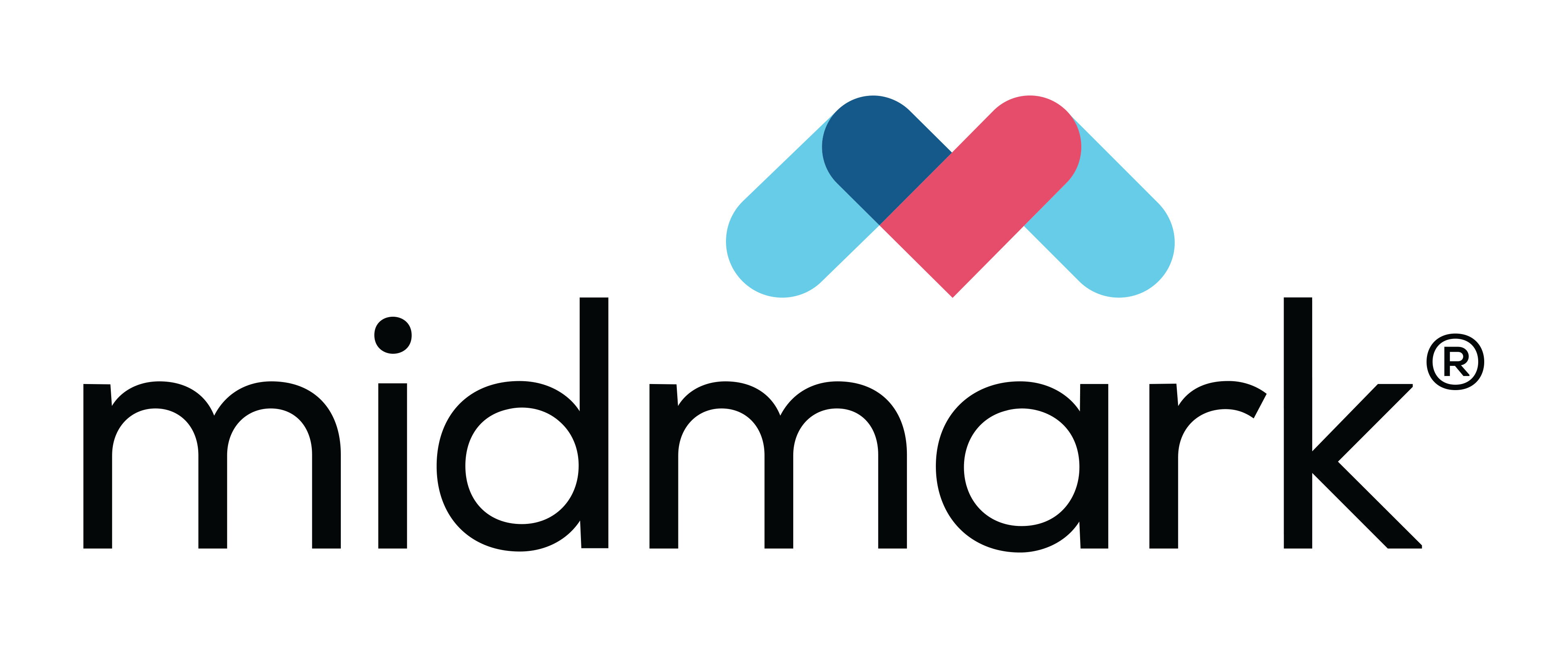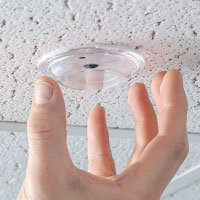Visibility That Drives Value: How RTLS Optimizes Asset Management for Improved Patient Care, Staff Satisfaction and Financial Outcomes

3/26/2025
The frustration of losing a set of keys is something that everyone can relate to. Whether it's a frantic search through your bag or retracing your steps around the house, that feeling of frustration is universal. In the healthcare setting, that feeling can be a multiple-times-per-day occurrence for nurses, who often can’t find the equipment they need to deliver patient care. And when equipment is expensive, specialized and vital, the consequences are much more severe.
Losing equipment can create major disruptions. Just as you might waste time looking for your keys, staff can find themselves scrambling to locate essential, and in some cases, lifesaving equipment for patient care. In both scenarios, the frustration is the same—time is lost, and the goal is to find what you need as quickly as possible to minimize disruption. In hospitals where the stakes are much higher, the impact of a missing piece of equipment is detrimental to the following:
Patient care. Nurses spend an average of 30 minutes per ten hour shift looking for equipment such as IV pumps, wheelchairs, vein finders and more.[i] That’s time that they could be providing care to patients, which correlates directly to improved outcomes. A recent review in Cureus shows that patient-centered care can be an important strategy when trying to improve outcomes. [ii] When nurses spend time away from the bedside and needed equipment isn’t available, the timeliness and quality of patient care can suffer.
Patient satisfaction. Consider the following scenario: A discharged patient, anxious to go home after a strenuous hospital stay, is waiting to be escorted out of the hospital. However, since there is no available wheelchair, another couple of hours is tacked onto the patient’s stay. And, while the patient might have received great care, satisfaction with the overall experience is likely to suffer. There’s also another patient to think of in this scenario—the one who can’t be admitted in a timely manner because a wheelchair isn’t available to discharge the first patient. Not only does this affect the patient experience, it could also affect the increased revenue that comes with timely discharges and room turnover. With more focus on caregiving through improved asset management, patient satisfaction scores can improve by as much as 15 points.[iii]
Staffing in the age of burnout. The Health Resources and Services Administration (HRSA) projects a shortage of 63,720 RNs by 2030 in the United States.[iv] Such numbers are concerning enough, but consider the following as well: In April 2022, Dr. David Auerbach and colleagues published a nursing workforce analysis in Health Affairs, that found that total supply of RNs decreased by more than 100,000 from 2020 to 2021—the largest drop than ever observed over the past four decades. A significant number of nurses who left the workforce were under the age of 35, and most were employed in hospitals.[v]
While the study did not delve into medical equipment management, it seems safe to assume these young nurses envisioned a career filled with rewarding interactions with patients, not one filled with menial tasks including spending 10% of their shift looking for equipment.1 Overall, nurses are exhausted from increased workloads and constantly fretting about not having the equipment to do their job. And this adds stress and anxiety to employees already experiencing high burnout and turnover rates.
An organization’s bottom-line. Whether stolen, misplaced or lost, missing medical equipment costs American hospitals millions annually.[vi] Sometimes, in attempts to ensure patient care does not get disrupted, nurses hide important equipment. In fact, clinical leaders estimate that 30% of their equipment is hidden at any given time.[vii] At the same time, asset fleets are shrinking by 10% every year,6 with equipment that is not able to be found, transferred with patients to other hospitals or simply stolen. The costs add up. Missing equipment impacts the average 300-bed hospital by $7 million annually.1 Here’s the unfortunate breakdown:
- $5,250,000 in non-value added nursing wages, for covering the 10% of nursing shifts spent away from the bedside looking for missing equipment1
- $1,500,000 in write offs for the 10% of equipment that goes missing each year6
- $125,000 in capital expenses from over-purchasing assets to ensure availability
- $100,000 in hidden operational expenses as individual nursing units replace lost assets
- $42,750 in biomedical technician wages for the 208 hours per year they spend simply searching for equipment7
- $3,000 in equipment rental costs to supplement for missing assets
What’s needed to solve this asset management problem? In a word, visibility. For insight into the location of their medical equipment, hospitals can rely on a real-time locating systems (RTLS) that can be used to identify and track the location of objects or people in real time, usually within a building or other contained area. Beyond just visibility to location of equipment, RTLS technology can also help to visually manage distribution of assets with periodic automatic replenishment (PAR) levels.
Midmark CareFlow™ RTLS provides an enterprise view that not only enables users to easily find equipment and proactively manage equipment distribution with PAR levels but also track asset movements and view preventive maintenance dates. As a result, it is possible to know which hospital units are running low on key assets and which are overstocked, keep tabs on mobile asset inventory and save on unnecessary equipment expenditures.
The results of using RTLS can be substantial. After implementing CareFlow Asset Tracking and PAR Management, a Michigan hospital shared their successes in saving valuable staff time and significantly reducing costs. Their biomedical team performed a software upgrade on pumps within three days which would have taken several weeks to complete before implementing RTLS. Additionally, utilization of assets was improved by 133% allowing them to decrease pump acquisition from 1,000 to 600, saving more than $1 million.
The visibility and proactive asset management provided as a result of using RTLS can drive value by optimizing staff time and equipment location. The results? Improved patient care, increased staff satisfaction and significant cost reductions for the organization.
For more information on Midmark CareFlow RTLS Asset Tracking,
visit our website
>1 American Cancer Society.
2 NCI Cancer Fast Facts.
3 “Mortality due to cancer treatment delay: a systematic review and meta-analysis. British Medical Journal. November 2020.
4 “Reducing Wait Time in a High-volume Pediatric Neuro-oncology Clinic by Optimizing Process Flow: A Quality Improvement Project.” National Library of Medicine. June 2022.
5 “Measuring the Use of Examination Room Time in Oncology Clinics: A Novel Approach to Assessing Clinic Efficiency and Patient Flow.” National Library of Medicine. November 2014.
6 “How Does Your Infusion Center Measure Up?” Association of Community Cancer Centers. 2015.
7 “Evaluation of oncology infusion pharmacy practices: A nationwide survey.” National Library of Medicine. April 2019.[1] Midmark RTLS customer interviews

 Nurse Call AutomationAutomatic call cancellation to lighten the nurse workload and give more time back to the patient care experience.
Nurse Call AutomationAutomatic call cancellation to lighten the nurse workload and give more time back to the patient care experience.
 Staff SafetyDiscreet, accurate and real-time alerts through a wearable duress button that helps provide an efficient response and protect staff against workplace violence.
Staff SafetyDiscreet, accurate and real-time alerts through a wearable duress button that helps provide an efficient response and protect staff against workplace violence.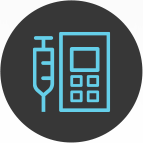
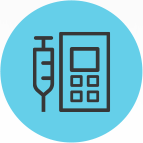 Asset TrackingIn-the-moment equipment locating to support safe and timely patient care and controlled costs.
Asset TrackingIn-the-moment equipment locating to support safe and timely patient care and controlled costs.
 Patient FlowEnhanced communication designed to optimize operations, enrich patient experiences and improve staff satisfaction.
Patient FlowEnhanced communication designed to optimize operations, enrich patient experiences and improve staff satisfaction. AnalyticsDerived from actionable insights at your fingertips, accurate location information drives informed decision making.
AnalyticsDerived from actionable insights at your fingertips, accurate location information drives informed decision making. Contact TracingQuick, accurate information at your fingertips for your contact tracing efforts.
Contact TracingQuick, accurate information at your fingertips for your contact tracing efforts.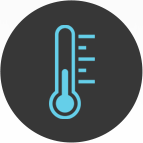
 Temperature MonitoringA partnership of best-in-class solutions, available through an interface with Primex environmental monitoring.
Temperature MonitoringA partnership of best-in-class solutions, available through an interface with Primex environmental monitoring.
 InterfacesA seamless architecture that exchanges data automatically between your RTLS and other enterprise applications in real time.
InterfacesA seamless architecture that exchanges data automatically between your RTLS and other enterprise applications in real time.
 RTLS System Integrator ResourcesDiscover our library of sales and marketing resources.
RTLS System Integrator ResourcesDiscover our library of sales and marketing resources. Case StudiesSee how we’ve helped our customers design better, more efficient care.
Case StudiesSee how we’ve helped our customers design better, more efficient care. White PapersEmbrace innovation in your health system with thought leadership.
White PapersEmbrace innovation in your health system with thought leadership.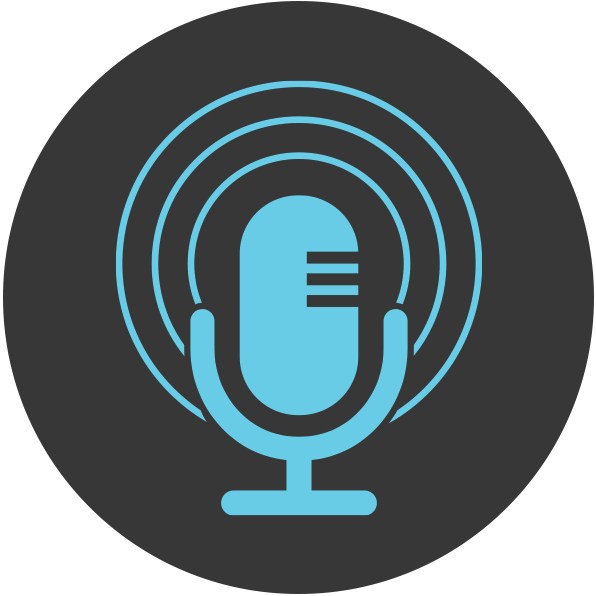 Webinars + PodcastsListen to the latest from Midmark RTLS here.
Webinars + PodcastsListen to the latest from Midmark RTLS here.
 BlogThink differently and solve problems with new ideas to enhance patient care.
BlogThink differently and solve problems with new ideas to enhance patient care. Published PerpectivesChange is a constant in healthcare—and we’re leading the way. Read our recent bylines and articles.
Published PerpectivesChange is a constant in healthcare—and we’re leading the way. Read our recent bylines and articles. InfographicsLet us show you the whole picture with real-world applications.
InfographicsLet us show you the whole picture with real-world applications. RTLS Press ReleasesFind out what’s happening at Midmark RTLS. View the latest news about Midmark RTLS and the healthcare industry.
RTLS Press ReleasesFind out what’s happening at Midmark RTLS. View the latest news about Midmark RTLS and the healthcare industry.
